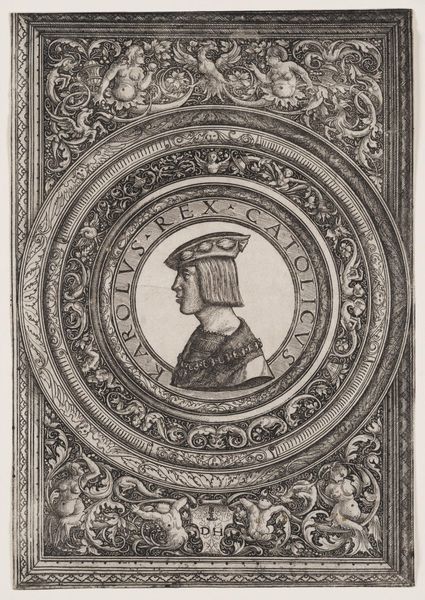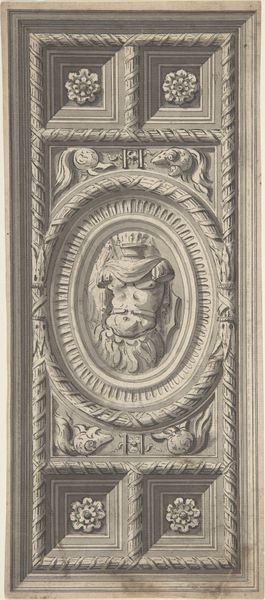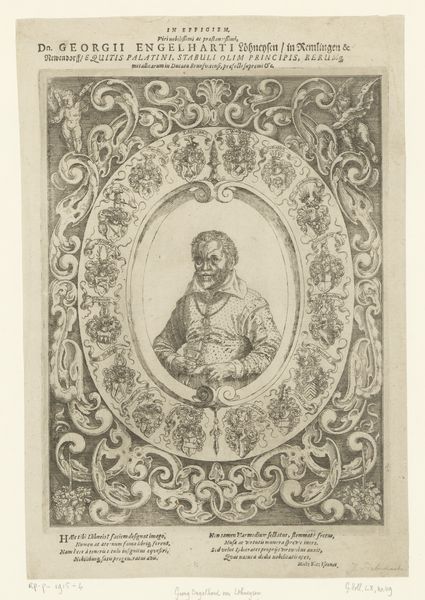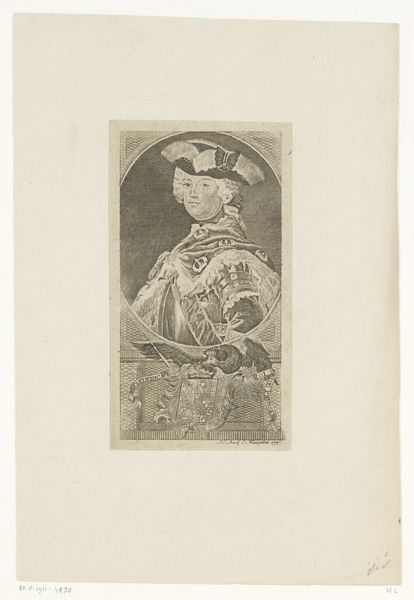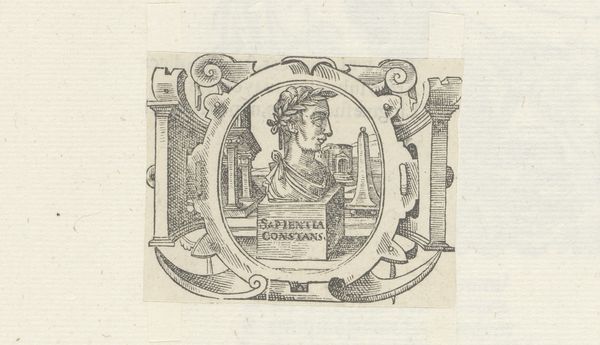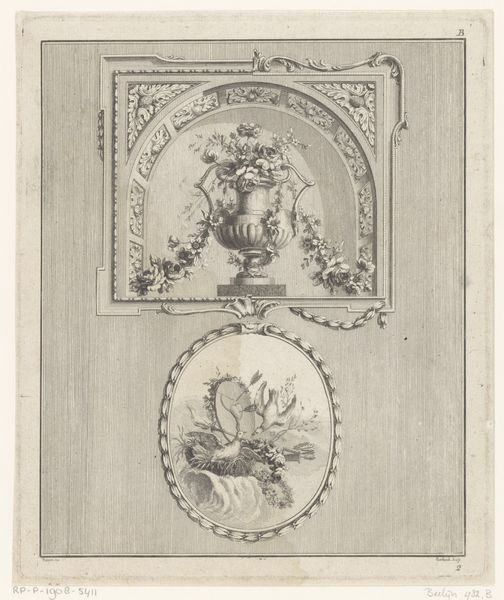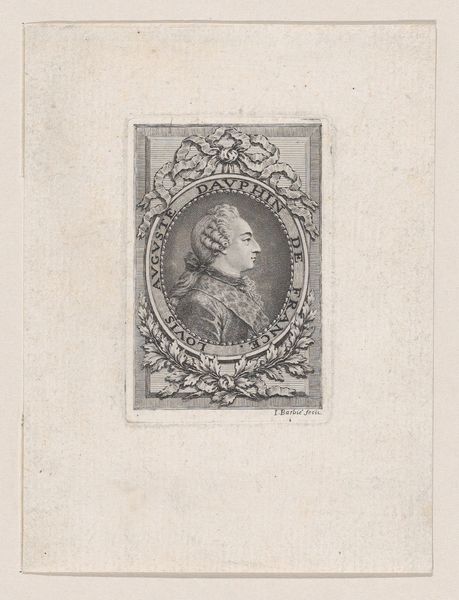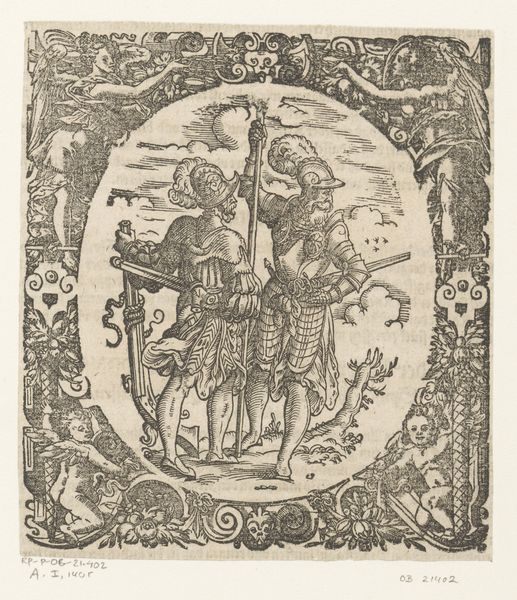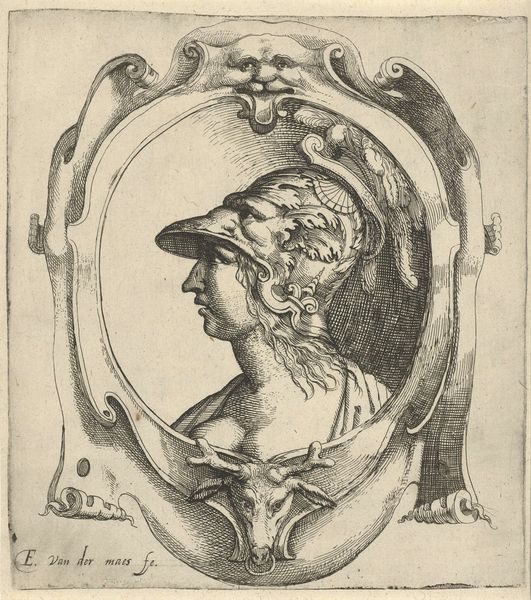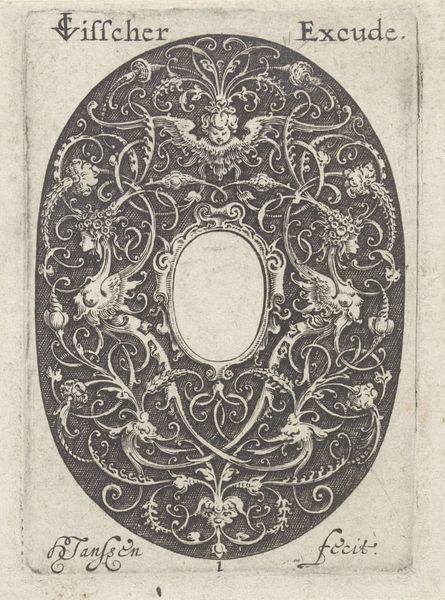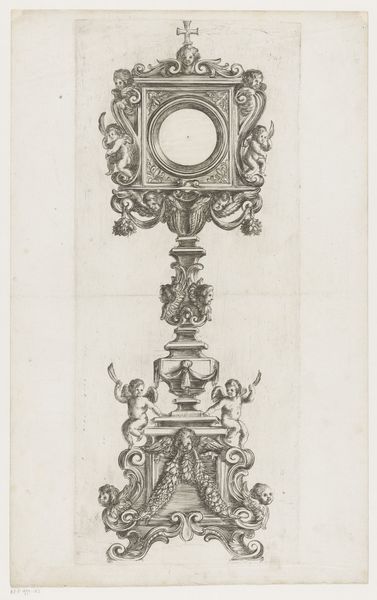
#
toned paper
#
pen drawing
#
mechanical pen drawing
# print
#
pen sketch
#
pencil sketch
#
old engraving style
#
pen-ink sketch
#
pen work
#
pencil art
#
intricate and detailed
Dimensions: sheet (trimmed within plate mark): 22.8 x 15.8 cm (9 x 6 1/4 in.)
Copyright: National Gallery of Art: CC0 1.0
Curator: Here we have Daniel Hopfer’s print of Emperor Charles V, dating to around 1519. Editor: My initial reaction is of extreme delicacy. The fine lines almost disappear into the toned paper, creating a hazy, ethereal impression. It's contained in an elaborate circular and rectangular border that I am fascinated by. Curator: It's important to remember Hopfer was a pioneering figure in etching, which allowed for this level of intricate detail. This print is exemplary of the political power portraiture served at the time. The text and ornamental elements around Charles reinforce his authority, portraying him as ‘Karolvs Rex Catholicvs’. Editor: Etching, a subtractive process using acid to bite into the metal plate, allowed a certain freedom compared to engraving, right? That explains the linework which reminds me more of drawing, like a sketch that's meant to have been rapidly done, than rigid printmaking. You also have to consider that metal plates were relatively expensive, indicating an intended audience of means to produce an artwork with that type of medium. Curator: Precisely. Etching allowed for the relatively rapid production of images for dissemination, and in the case of Charles V, for spreading a visual message of Imperial authority throughout his territories and beyond. We must remember the power these images held. How were they used and understood by different classes and nationalities? Editor: True, but there's something really striking about the contrast between the rather idealized central portrait, within the perfect roundel and that square heavy frame ornamented with winged figures. Curator: I agree. This merging of classicized decorative motifs with contemporary portraiture signals Charles' aspirations to connect his reign to historical antecedents of power and legitimacy. The question remains though: was Hopfer working under direct commission or more speculatively, aiming to capture and profit from the emperor's rising star? Editor: Regardless, I find myself drawn to the contrast of fine etched details and bold graphic layout; an incredible testament to the expressive possibilities of the medium itself. I wonder about the availability of acid at the time. Curator: Considering all the levels and influences impacting the creation of this image offers so much perspective, not only on the emperor but also on the people producing these kinds of political materials.
Comments
No comments
Be the first to comment and join the conversation on the ultimate creative platform.
